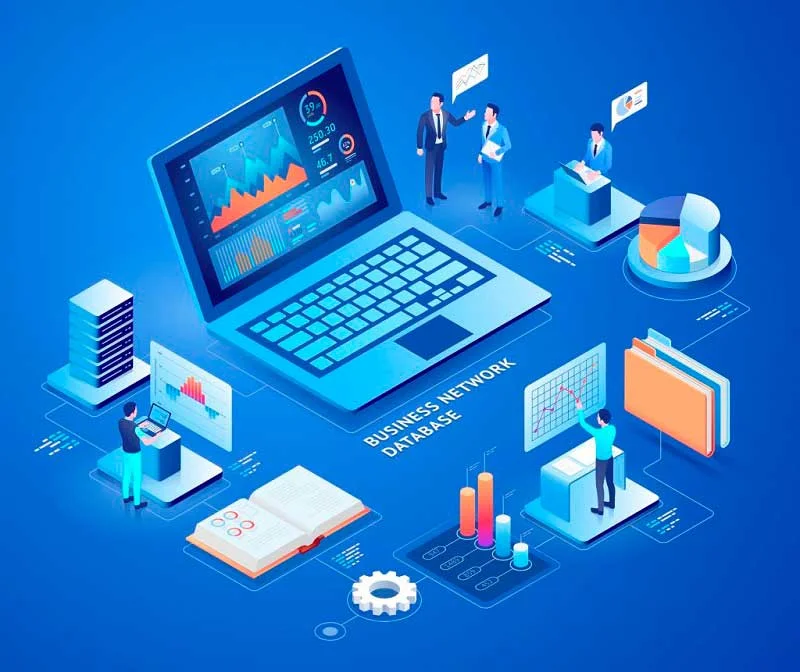Every hardware or software system will go through a development process which can be thought as an iterative process with multiple steps. SDLC is used to give a rigid structure and framework to define the phases and steps involved in the development of a system. The conceptual design stage is the stage where an identified need is examined, requirements for potential solutions are defined, potential solutions are evaluated, and a system specification is developed. The system specification represents the technical requirements that will provide overall guidance for system design. Because this document determines all future development, the stage cannot be completed until a conceptual design review has determined that the system specification properly addresses the motivating need.
Numerous model frameworks can be adapted to fit into the development of software. After training, systems engineers and developers transition the system to its production environment. Relevant questions include whether the newly implemented system meets requirements and achieves project goals, whether the system is usable, reliable/available, properly scaled and fault-tolerant.
Phase 6: Training and Implementation
One big disadvantage here is that it can eat up resources fast if left unchecked. Also, make sure you have proper guidelines in place about the code style and practices. Toolshero supports people worldwide (10+ million visitors from 100+ countries) to empower themselves through an easily accessible and high-quality learning platform for personal and professional development.
- The Big Bang model is incredibly flexible and doesn’t follow a rigorous process or procedure.
- However, regardless of the model you pick, there are a lot of tools and solutions, like Stackify’s Retrace tool, to assist you every step of the way.
- The project manager is responsible for executing and closing all the linear steps of planning, building, and maintaining the new or improved system throughout the process.
- This can include handling residual bugs that were not able to be patched before launch or resolving new issues that crop up due to user reports.
Maintenance involves updating an existing software product to fix bugs and ensure reliability. It can also include adding new features or functionality to a current product. Operations refer to the day-to-day running of a software product or service, such as performing backups and other administrative tasks.
Analysis Stage
All stakeholders then review this plan and offer feedback and suggestions. It’s crucial to have a plan for collecting and incorporating stakeholder input into this document. Failure at this stage will almost certainly result in cost overruns at best and the total collapse of the project at worst. SDLC or the Software Development Life Cycle is a process that produces software with the highest quality and lowest cost in the shortest time possible. SDLC provides a well-structured flow of phases that help an organization to quickly produce high-quality software which is well-tested and ready for production use.

Typically, the more steps defined in an SDLC model, the more granular the stages are. The design stage takes as its input the requirements https://www.globalcloudteam.com/ already defined. This may involve training users, deploying hardware, and loading information from the prior system.
Benefits of SDLC
The team will build functionality for the product or service, which includes creating a user interface and building the database so users can store information in your system. Systems analysis and design (SAD) can be considered a meta-development activity, which serves to set the stage and bound systems development cycle the problem. SAD interacts with distributed enterprise architecture, enterprise I.T. Architecture, and business architecture, and relies heavily on concepts such as partitioning, interfaces, personae and roles, and deployment/operational modeling to arrive at a high-level system description.
The team produces a new software version at the end of each iteration. The development team combines automation and manual testing to check the software for bugs. Quality analysis includes testing the software for errors and checking if it meets customer requirements. Because many teams immediately test the code they write, the testing phase often runs parallel to the development phase.
Phase 7: Operations and Maintenance
Developers will follow any coding guidelines as defined by the organization and utilize different tools such as compilers, debuggers, and interpreters. By developing an effective outline for the upcoming development cycle, they’ll theoretically catch problems before they affect development. Software testing must take place in a specialized testing environment and should test the full functionality of the system (the test environment).
This process is repeated again and again, with each iteration yielding a new version of, for instance, the software. The seventh phases of the Systems Development Life Cycle (SDLC) is often ignored or missed. This phase consists of maintenance and performing regular necessary updates. Furthermore, small bugs that were not found during testing can make an appearance later on. Regardless if the team works with a document of functional requirements or a handwritten list, everyone must be able to understand each proposal, and each comment, to be involved. An effective SDLC ensures that the to-be-developed system is high quality and meets the client’s expectations.
The 7 stages or phases of the System Development Life Cycle
For example, testing may involve a defined number of end users and use case scenarios in order to be deemed successful, and maintenance may include quarterly, mandatory system upgrades. Design documents typically include functional hierarchy diagrams, screen layouts, business rules, process diagrams, pseudo-code, and a complete data model with a data dictionary. These elements describe the system in sufficient detail that developers and engineers can develop and deliver the system with minimal additional input. During this stage of the system lifecycle, subsystems that perform the desired system functions are designed and specified in compliance with the system specification.

Results of software testing must be documented and approved by the IT Manager and the System Owner. All changes to a system must be formally controlled via the Forensic Laboratory change control process, as defined in Chapter 7, Section 7.4.3. Change management procedures for operational software are implemented. Once the system is deployed within the agency, ongoing operations and maintenance will occur that are led by agency IT staff along program leads. Periodic review of system function should occur to ensure that the system performs as designed and system updates are identified.
How does SDLC address security?
Primarily, there were only five phases in the system development life cycle, but two additional phases were added to help the system analysts to achieve specific goals by having clearer actions. New versions of a software project are produced at the end of each phase to catch potential errors and allow developers to constantly improve the end product by the time it is ready for market. Before we even begin with the planning stage, the best tip we can give you is to take time and acquire proper understanding of app development life cycle. In the implementation phase, the development team codes the product. They analyze the requirements to identify smaller coding tasks they can do daily to achieve the final result.